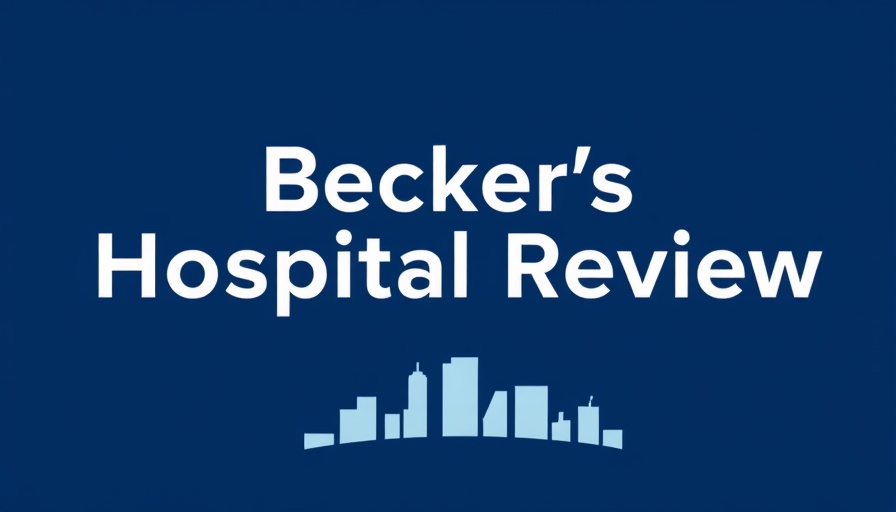
Navigating Leadership Changes in Healthcare
In a significant move that underscores the blend of nursing and administrative roles within healthcare, Titus Regional Medical Center in Mount Pleasant, Texas, has appointed its Chief Nursing Officer, Kathy Griffis, RN, to also serve as the Chief Operating Officer (COO). This dual role highlights the hospital's commitment to integrating clinical and operational perspectives to improve patient care and hospital efficiency.
The Significance of a Dual Role
By entrusting Kathy Griffis with both the CNO and COO responsibilities, the medical center emphasizes the increasing importance of leadership that understands both the clinical needs of patients and the operational requirements of running a healthcare facility. This dual perspective can lead to enhanced patient engagement tools and improved practice efficiency solutions, translating into better health outcomes for the community.
Kathy Griffis: A Lifelong Commitment
Kathy Griffis brings two decades of experience at Titus Regional Medical Center, having started her journey there over 20 years ago. Since being appointed CNO in 2020, she has developed initiatives that elevate nursing practices and ensure high-quality patient care. Her extensive background positions her uniquely to address challenges in healthcare delivery while fostering a culture of empathy and responsiveness.
Healthcare Automation Tools: A Key to Operational Success
As hospitals continue to evolve, the integration of healthcare automation plays a pivotal role in enhancing operational efficiencies. Leveraging tools such as voice AI agents and missed call automation, facilities can streamline communication and optimize practice revenue. Kathy’s leadership aims to adopt such innovative solutions to position Titus Regional at the forefront of healthcare delivery advancements.
Improving Employee Health Benefits Through Leadership
Sound leadership is essential not only for patient care but also for the well-being of healthcare professionals. With the new appointment, there's a renewed focus on employee health benefits and workplace satisfaction, which are critical factors for medical staff retention. Enhancing the workplace environment directly contributes to a more fulfilled workforce, ultimately benefiting patient care.
Future Implications of the CNO-COO Role
The trend of combining clinical and operational leadership reflects a broader shift in healthcare toward integrated care models. As more facilities recognize the value of such roles, it will likely lead to increased efficiencies in healthcare delivery, ultimately impacting the overall patient experience. With ongoing challenges around Medicare reimbursement and rising operational costs, the strategic foresight exhibited by Titus Regional can inspire other facilities to reevaluate their leadership structures.
Empowering Communities Through Effective Leadership
In rural areas like Mount Pleasant, the leadership decisions at Titus Regional Medical Center hold particular significance. As communities face unique healthcare access challenges, having a leader with genuine insights into both nursing practice and hospital operations can serve as a model for independent pharmacies and healthcare providers. Establishing strong local healthcare facilities fosters trust and stability, offering solutions like aging in place and senior care services that directly serve community needs.
Call to Action: Join the Conversation!
As we watch this evolution unfold at Titus Regional Medical Center, we encourage healthcare leaders, independent practitioners, and community stakeholders to discuss how integrating leadership roles can enhance the healthcare landscape. Share your thoughts on how dual roles can help address the pressing challenges within healthcare today.
 Add Row
Add Row  Add
Add 




Write A Comment